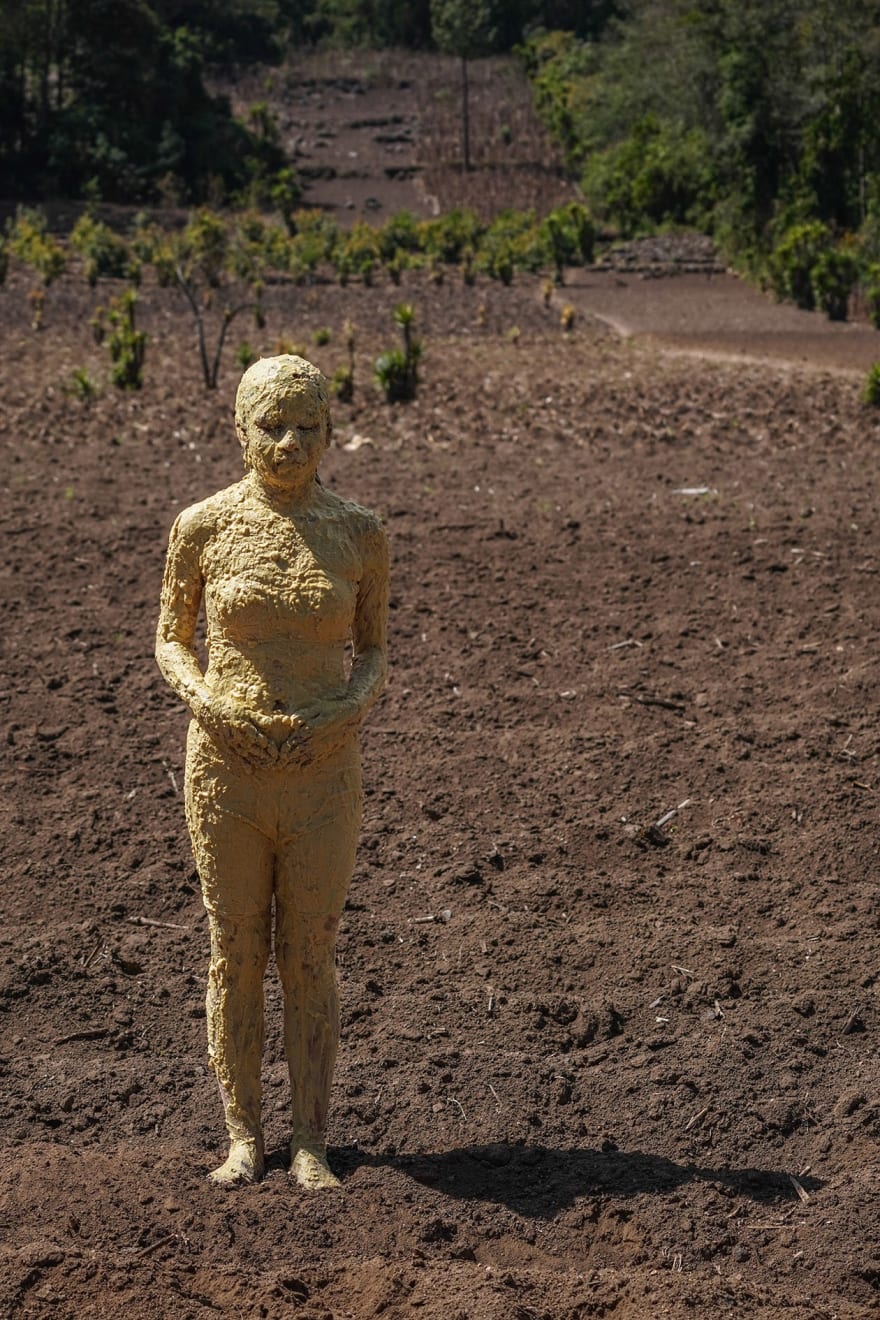-
Benvenuto Chavajay
Maiz, 2022impressão fineart sobre papel Hahnemühle Matt Fibre | fineart print on Hahnemühle Matt Fiber paper90 x 60 cm | 35.43 x 23.62 inPara Benvenuto Chavajay, na arte, importa o processo: a forma como suas criações abrem espaço para rituais que resgatam e celebram a ancestralidade de seu povo, ao mesmo tempo em...Para Benvenuto Chavajay, na arte, importa o processo: a forma como suas criações abrem espaço para rituais que resgatam e celebram a ancestralidade de seu povo, ao mesmo tempo em que faz uma crítica à modernidade. Os corpos cobertos de matéria aludem à criação da humanidade no livro sagrado Popol Vuh – a terra (ou lodo), a madeira, e o milho – com um quarto elemento, a planta, que o artista propõe tratar também como símbolo da criação depois de testemunhar a cura de sua mãe, que, facilitada por plantas medicinais, representou um nascer de novo.As fotografias, todas feitas nos arredores de São Pedro La Laguna, na Guatemala, local de origem de Benvenuto Chavajay, capturam processos ritualísticos carregados de significado. Em cada fotografia, cada elemento tem um simbolismo específico para Chavajay, desde a planta que cobre o corpo, até a casa que se vê ao fundo, ou a terra em tempo de semeadura. Esses simbolismos compõem uma prática que o artista chama de Perijtualidad: acrescentando à ideia de ritualidade o rij - que em sua língua se refere ao que é do passado e ancestral; e a noção do peripatético, para qual o caminhar se centra nas especificidades de um lugar, que por sua vez é uma noção fundamental para uma consciência ambiental profunda.Para Benvenuto Chavajay, en el arte, el proceso es importante: la forma en que sus creaciones abren espacio para rituales que rescatan y celebran la ancestralidad de su pueblo, al mismo tiempo que critican la modernidad. Los cuerpos cubiertos de materia hacen referencia a la creación de la humanidad en el libro sagrado Popol Vuh – la tierra (o lodo), la madera y el maíz – con un cuarto elemento, la planta, que el artista propone también tratar como símbolo de la creación después de ser testigo de la curación de su madre, que, facilitada por plantas medicinales, representó un renacimiento.
Las fotografías, todas tomadas en los alrededores de San Pedro La Laguna, en Guatemala, lugar de origen de Benvenuto Chavajay, capturan procesos rituales cargados de significado. En cada fotografía, cada elemento tiene un simbolismo específico para Chavajay, desde la planta que cubre el cuerpo hasta la casa que se ve al fondo o la tierra en época de siembra. Estos simbolismos componen una práctica que el artista llama Perijtualidad: añadiendo a la idea de ritualidad el rij - que en su lengua se refiere a lo que es del pasado y ancestral; y la noción de lo peripatético, donde el caminar se centra en las especificidades de un lugar, lo cual es fundamental para una conciencia ambiental profunda.
In Benvenuto Chavajay’s view, in art the process is important: the way his creations open space for rituals that recover and celebrate the ancestrality of his people, at the same time that they criticize modernity. The bodies covered with matter allude to the materials mentioned in the story about the creation of humankind in the sacred book Popol Vuh – earth (or mud), wood, and corn – with a fourth element, the plant, which the artist also treats as a symbol of creation after witnessing the cure of his mother, who, aided by medicinal plants, experienced a rebirth.
The photographs, all made around San Pedro La Laguna, in Guatemala, where Chavajay is from, record ritualistic practices charged with meaning. In the photographs, each element has a specific symbolism for Chavajay, ranging from the plant that covers the body, to the house seen in the background, or the earth during planting time. These symbolisms compose a practice that the artist calls Perijtualidad: combining the idea of rituality, rij – which in his language refers to something from the past and ancestral – and the notion of peripatetic, for which walking is centered in the specificities of a place, which in turn is a fundamental notion for a profound environmental awareness.
